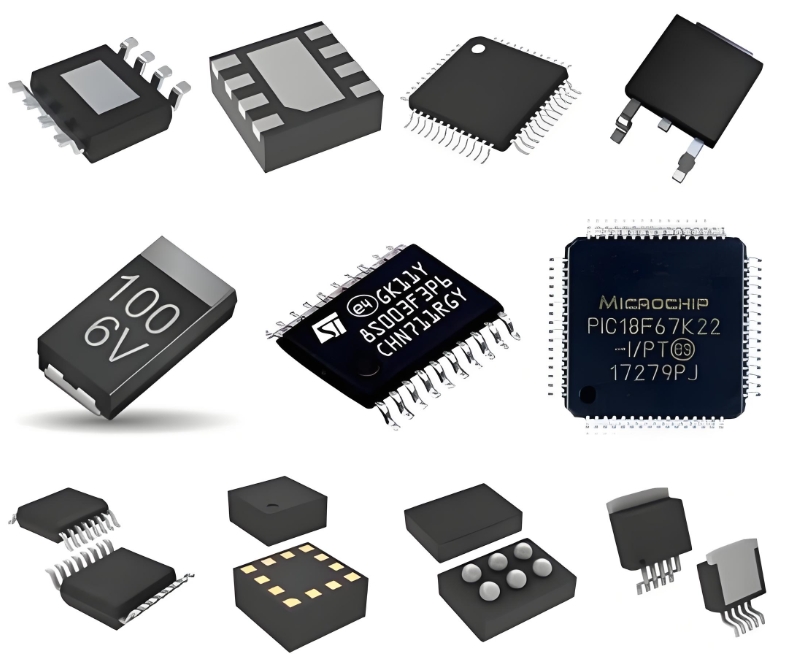**AD5263BRUZ20: A Comprehensive Guide to DigiPot Performance and Circuit Design**
The AD5263BRUZ20 from Analog Devices represents a significant advancement in digital potentiometer (DigiPot) technology, offering engineers a robust, programmable solution for analog signal conditioning and adjustment. This device, a **20kΩ, 256-position digital potentiometer**, is designed to replace mechanical potentiometers in a wide array of applications, from industrial control systems to audio equipment and precision instrumentation. Its performance and integration capabilities make it a cornerstone for modern circuit design where reliability, space savings, and digital control are paramount.
**Understanding the Core Performance Metrics**
The performance of the AD5263BRUZ20 is defined by several key parameters that directly impact its behavior in a circuit.
* **Resolution:** With **256 tap points**, the device offers a fine adjustment granularity. The step size is approximately 78Ω (20kΩ/255), which is suitable for applications requiring precise set-point adjustments.
* **Interface and Control:** Utilizing a versatile **3-wire SPI-compatible serial interface**, it allows for straightforward communication with microcontrollers and digital processors. This enables remote adjustment and automation, which is impossible with traditional mechanical pots.
* **Non-Volatile Memory (NVM):** A critical feature is its **integrated non-volatile memory (NVM)**. This allows the device to save the last wiper position before power-down and recall it automatically upon power-up, ensuring consistent operation without the need for re-initialization by the host system.
* **Temperature Stability and Endurance:** The solid-state design offers excellent temperature coefficient performance (typically 35 ppm/°C) and a virtually unlimited number of adjustment cycles, far exceeding the wear-and-tear limitations of mechanical alternatives.
**Critical Considerations for Circuit Design**

Integrating the AD5263BRUZ20 effectively requires careful attention to circuit design details to maximize its performance.
1. **Power Supply Sequencing and Bypassing:** For optimal performance and to prevent latch-up, **proper power supply sequencing is crucial**. The digital and analog supplies (VDD and VSS) should be applied before or simultaneously with the logic input signals. Furthermore, **bypass capacitors (0.1µF to 10µF) should be placed as close as possible to the VDD and VSS pins** to minimize noise and stabilize the supply voltages.
2. **Voltage Biasing and Signal Range:** The AD5263 is a true potentiometer; its operation is constrained by its power rails. The analog signals applied to the A, B, and W terminals **must not exceed the supply voltages VDD and VSS**. Exceeding these limits can forward-bias internal ESD protection diodes, leading to unexpected current flow and potential device damage. For bipolar signal operation, the supplies must be set to span the desired input signal range (e.g., VSS = -5V, VDD = +5V to handle a ±5V signal).
3. **Wiper Resistance and Load Effects:** The wiper terminal has a inherent resistance (R_W), typically 50Ω. While this is low, it can become a error source in high-precision, high-impedance circuits. More significantly, the **load impedance connected to the wiper (W) terminal will drastically affect the overall transfer function**. For a voltage divider application, the output load should be significantly larger than the potentiometer's resistance (R_AB = 20kΩ) to avoid loading errors and maintain a linear response.
4. **Configuration Modes:** The device can be used in two primary configurations:
* **Variable Resistor (Rheostat) Mode:** In this mode, one of the terminal pins (A or B) is left unconnected or tied to the wiper. This configuration is ideal for applications like programmable gain amplifiers or current sources. Care must be taken to ensure the wiper current does not exceed the specified maximum (typically ±3mA for the AD5263).
* **Voltage Divider Mode:** This is the most common use case. The analog voltage is applied across terminals A and B, and the divided output voltage is tapped from the wiper. This is perfect for reference voltage scaling or adjusting amplifier offsets.
**Application Spotlight: Programmable Gain Amplifier (PGA)**
A quintessential application is in a non-inverting PGA circuit. By using the AD5263BRUZ20 in the feedback loop of an op-amp, the gain can be digitally controlled. The DigiPot sets the resistance ratio that defines the amplifier's closed-loop gain (G = 1 + R_FB / R_G). The **high resolution and digital programmability allow for micro-stepped gain adjustments**, making it ideal for automatic gain control (AGC) systems or sensor calibration routines.
ICGOOODFIND: The AD5263BRUZ20 stands out as a premier digital potentiometer solution, merging high resolution, non-volatile memory, and a simple digital interface. Its successful implementation hinges on thoughtful circuit design, particularly regarding supply management, signal biasing, and understanding load interactions. For designers seeking to replace mechanical pots or add software-controlled adjustability to their systems, the AD5263BRUZ20 offers a powerful and reliable pathway to innovation.
**Keywords:** Digital Potentiometer, SPI Interface, Non-Volatile Memory, Programmable Gain Amplifier, Signal Conditioning.
